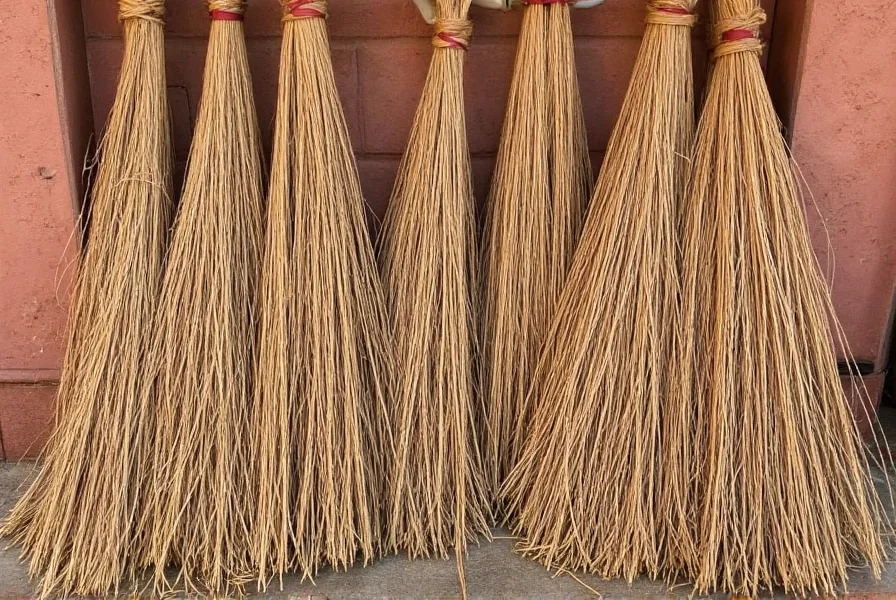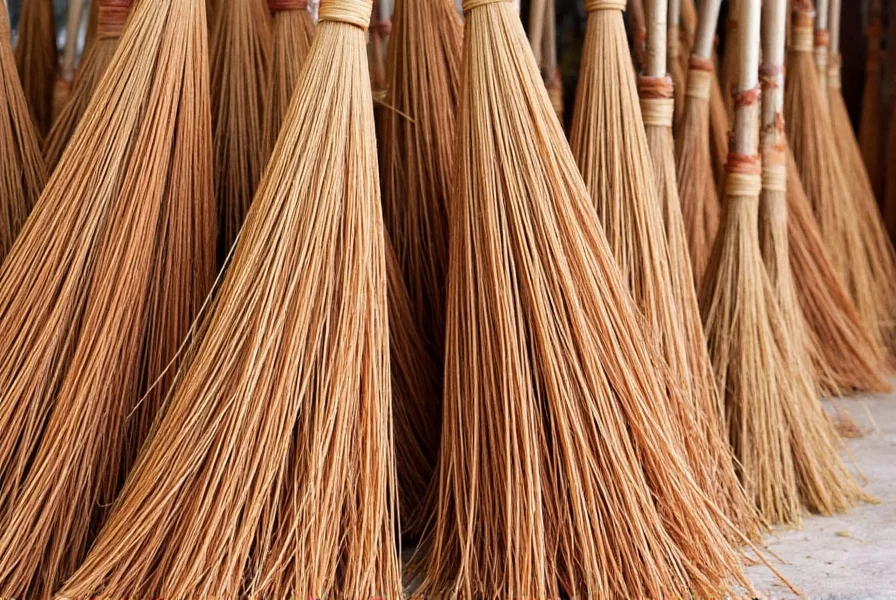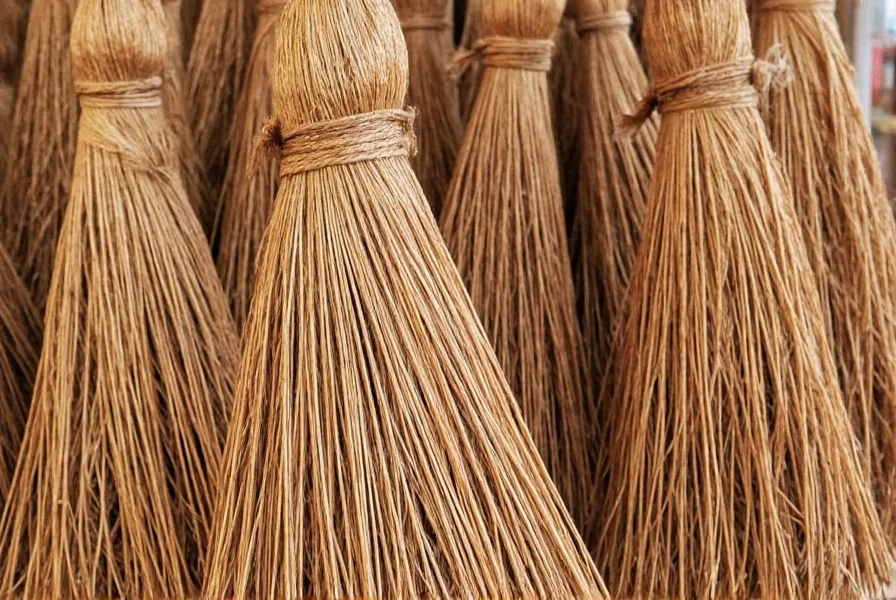Understanding the true nature of cinnamon brooms requires exploring their rich cultural heritage beyond the common misconception that they serve practical cleaning purposes. These distinctive decorations represent a meaningful tradition that has evolved from 19th century folk practices into contemporary decorative elements while maintaining spiritual significance for many communities.
The Historical Roots of Cinnamon Brooms
Cinnamon brooms trace their origins to the Gullah Geechee culture along the southeastern US coast, where African spiritual traditions blended with available materials. Enslaved Africans adapted their broom-making knowledge using locally accessible cinnamon sticks, creating items that served both practical and spiritual functions. The practice spread throughout the American South, particularly in Georgia, South Carolina, and Louisiana, where these brooms became fixtures above doorways in both rural and urban settings.
Historical records from the late 1800s document the use of cinnamon brooms in African American communities as protective symbols. The tradition incorporated elements from various African spiritual practices where brooms symbolized cleansing and boundary protection. Cinnamon's natural properties—its strong scent, reddish color, and preservative qualities—made it particularly suitable for these symbolic creations.
Cultural Significance and Symbolism
The meaning behind cinnamon brooms extends far beyond mere decoration. In traditional hoodoo and conjure practices, these brooms serve specific purposes:
| Symbolic Element | Traditional Meaning | Modern Interpretation |
|---|---|---|
| Cinnamon sticks | Protection, prosperity, purification | Natural air freshener with symbolic meaning |
| Upward-facing position | Preventing negative energy from entering | Decorative orientation tradition |
| Doorway placement | Threshold protection | Welcoming decorative element |
Cinnamon's significance stems from its historical value as a precious spice and its natural properties. The reddish-brown color connects to spiritual traditions associating red with protection, while cinnamon's preservative qualities symbolize longevity and preservation of positive energy. When hung above doorways with the bristles pointing upward, traditional belief holds that the broom prevents negative energy from entering while attracting positive influences.

Traditional Construction Methods
Authentic cinnamon brooms follow specific construction principles that maintain their symbolic integrity. Traditional makers select straight cinnamon sticks of uniform length, typically between 12-18 inches. The sticks are carefully arranged with the smooth side facing outward and bound together using natural materials like raffia, hemp twine, or leather strips.
The binding process itself carries significance. Traditionally, the binding starts at the top and works downward in a specific pattern, with certain numbers of wraps holding particular meaning. Some practitioners incorporate additional elements like red ribbon (for protection), cloves (for prosperity), or small sachets containing other protective herbs.
Modern crafters sometimes adapt these methods using more accessible materials while attempting to honor the tradition's essence. However, purists maintain that authentic cinnamon brooms must use genuine cinnamon sticks rather than synthetic alternatives to maintain their intended properties.
Contemporary Uses and Cultural Considerations
Today, cinnamon brooms appear in various contexts:
- Home decoration: Many people appreciate them as natural, aromatic door decorations
- Spiritual practice: Within traditional African American spiritual communities, they maintain their protective significance
- Cultural heritage: Museums and cultural centers display them as examples of folk art
- Wedding traditions: Some incorporate them into wedding decor for prosperity symbolism
As cinnamon brooms have gained popularity beyond their cultural origins, questions about cultural appropriation have emerged. When adopting elements from another culture's spiritual practices, respectful engagement matters. Those interested in traditional cinnamon brooms should understand their origins rather than treating them as mere decorative trends.
Many contemporary crafters now collaborate with cultural practitioners to ensure respectful representation. Some Southern artisans continue the tradition while educating others about its significance, helping preserve the practice's authenticity while allowing for appropriate cultural exchange.
Common Misconceptions Clarified
Several misunderstandings surround cinnamon brooms that deserve clarification:
Misconception: Cinnamon brooms are functional cleaning tools
Reality: They've never served practical cleaning purposes—the name refers to their broom-like shape and symbolic cleansing properties.
Misconception: All decorative brooms have the same meaning
Reality: Cinnamon brooms specifically carry distinct cultural significance different from straw brooms or other decorative varieties.
Misconception: Their effectiveness depends solely on physical placement
Reality: Within traditional practice, proper construction, intention, and respect for the tradition contribute to their significance.

Creating Your Own Respectful Interpretation
For those interested in making cinnamon brooms, approaching the tradition with respect enhances the experience. Researching the cultural background before creating one demonstrates appreciation rather than appropriation. Many cultural centers and museums offer workshops led by tradition-bearers that provide authentic learning experiences.
When crafting your own cinnamon broom, consider:
- Sourcing genuine cinnamon sticks from ethical suppliers
- Learning about the traditional binding techniques
- Understanding the significance of placement and orientation
- Respecting the tradition's origins in your presentation and discussion
Whether appreciated for their aesthetic qualities, historical significance, or spiritual meaning, cinnamon brooms represent a living tradition that continues to evolve while maintaining connections to its cultural roots. Their enduring presence in Southern homes and growing recognition elsewhere speaks to the power of meaningful folk traditions.











 浙公网安备
33010002000092号
浙公网安备
33010002000092号 浙B2-20120091-4
浙B2-20120091-4